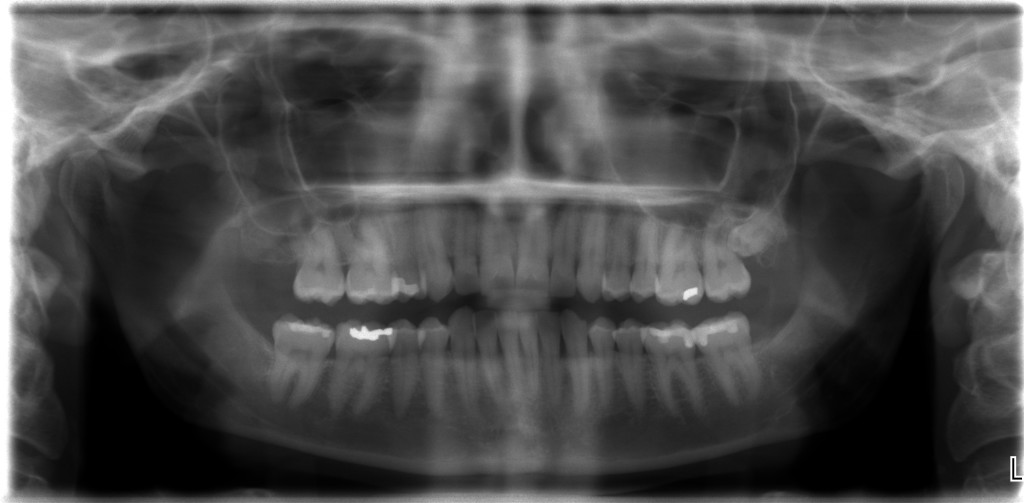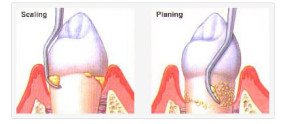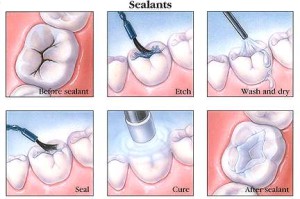Preventive Services
 Good oral health is a start to good over-all health.
Good oral health is a start to good over-all health.
Practicing good oral health starts early, begin brushing your child’s teeth as soon as the first tooth erupts. Brushing removes plaque and food particles from the surfaces of the teeth. When the plaque is not removed it can harden into calculus (tartar). If the tartar forms near the gumline, the gums can become inflamed and they may even become swollen and bleed. Worn-out toothbrushes do not clean your teeth properly and may injure your gums. It’s important to replace your toothbrush every 3-6 months or sooner if needed. Flossing will help to clean between the teeth and to remove plaque or food in areas a brush cannot reach. You should begin flossing when all primary teeth have erupted, usually around age 2. Your hygienist or dentist will instruct you on the proper way to brush and floss.
Start the road to a healthy mouth by visiting your dentist regularly beginning at the age of 6-12 months through adulthood.
Exams, Cleanings and Fluoride Treatments
During your visit the dentist will examine not only your teeth, but your overall oral health. An oral cancer screening and soft tissue exam will be done as well as checking the condition of your gums. The dentist will review your dental and medical history and answer any questions you may have about treatment. The goal is to help you be informed regarding your dental care.
At Lakeridge Dental we use digital x-rays to limit the radiation exposure to our patients. If you have any x-ray concerns, let us know and we would be happy to address them. 
We encourage regular dental visits so that you and your children realize the value of, and to help maintain, good oral health. Our hygienists perform several types of cleanings depending on your individual needs. A fluoride varnish may be applied at the end of your cleaning to help strengthen the enamel and prevent tooth decay. Our patients are scheduled for 3-month, 6-month and 12-month recall appointments.
Root Planing and Scaling (SRP) or Deep Tissue Cleaning
This is one of the most effective ways to treat gum disease. Once the gums have started to pull away from the teeth, or the roots have tartar on them, the hygienist or dentist may suggest this type of cleaning. The procedure cleans between the gums and the teeth down to the roots and an ultrasonic instrument may be use to aid the dental hygienist. If anesthesia is used, your lips and  gums may feel numb for a short period afterwards but SRP causes little or no discomfort.
gums may feel numb for a short period afterwards but SRP causes little or no discomfort.
SRP can introduce bacteria into the bloodstream. If you have a condition that puts you at high risk for infection you may need to take an antibiotic before this procedure. If you have certain heart problems, have an impaired immune system or have an artificial hip, knee, heart valve or other body part, be sure you inform the dentist or the hygienist.
If you maintain good dental care after the procedure your gums will heal and become healthy again.
Sealants
 A sealant is a material that covers the biting surfaces of the premolars and molars where cavities occur most often. Both children and adults can benefit from sealants and your dentist may recommend them. Sealants are easily applied by either a hygienist or a dentist, and while they protect the teeth from decay, they allow normal eating and drinking. It takes only a few minutes for each sealant to be done, the chewing surface is cleaned with water, then etched with a material to help the sealant stick to the tooth. When the sealant material is placed on the tooth a special curing light will be used to make it hard. Regular brushing and flossing can be done to maximize the benefits of the sealants.
A sealant is a material that covers the biting surfaces of the premolars and molars where cavities occur most often. Both children and adults can benefit from sealants and your dentist may recommend them. Sealants are easily applied by either a hygienist or a dentist, and while they protect the teeth from decay, they allow normal eating and drinking. It takes only a few minutes for each sealant to be done, the chewing surface is cleaned with water, then etched with a material to help the sealant stick to the tooth. When the sealant material is placed on the tooth a special curing light will be used to make it hard. Regular brushing and flossing can be done to maximize the benefits of the sealants.